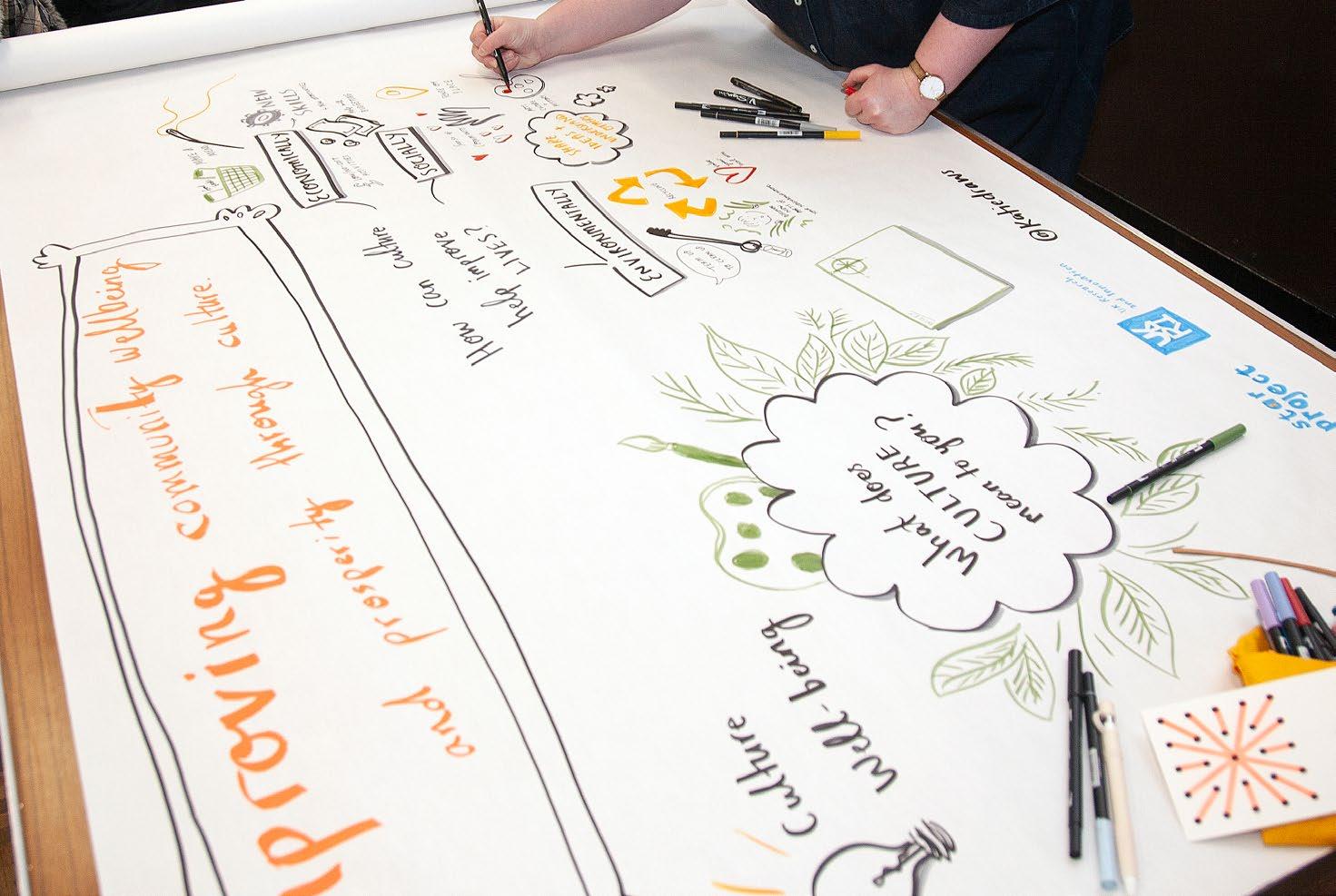
5 minute read
3.0 Policy approaches to the utilisation of arts & culture for social good
from The Role of Arts & Culture in Lifting Communities Out of Poverty, A Review of Evidence
by ccse_uws
Examining some of the definitional uncertainty with regard to poverty is valuable as it highlights the difficulty encountered in arriving at a definition and, accounting for the effect of political context on both the definition per se and, the levers that stakeholders may choose to use in attempting to tackle poverty. The focus of this review is the contribution that arts and cultural activity can make in the context of people and communities experiencing poverty. It is clear from the preceding discussion that the substantial and political nature of material poverty make it a difficult space in which to operate and make claims in relation to arts and cultural activity. In this respect it is important to consider: • How poverty is referred to and understood within arts and cultural interventions (e.g. as an indicator of need or proxy for low cultural engagement, rather than as the central problem to be addressed; or as interchangeably with wider multi-dimensional issues, such as educational attainment or wellbeing, which may more readily be addressed); and • Where arts and cultural activities and policies directly address issues of poverty – with a narrow definition of material resources – and what approaches are used; and to • Recognise that both the substantial and political nature of material poverty may in any case make it a difficult space within which to act.
The results of the keyword searches conducted for inclusion in this review reveal that many of the academic and grey sources of relevance do not adhere to a focussed definition of poverty – as material need – rather, a broad range of causal and impact factors and indicators are deployed within the analytical space. For example, Bashir & Dayson, (2014), South et al (2008), Cawston (201), and Polley et al, (2017) write about social prescribing, the benefits of which are analysed from both social and economic – in terms of return on investment – standpoints (particularly Bashir & Dayson, 2014:21-35, Polley et al, 2017). Arguably, this reflects the fact that it is difficult for arts and cultural activity to be leveraged in ways that bring substantive, measurable change to the experience of material poverty. This is acknowledged in some of the evidence reported; for example, the Culture, Welsh Language & Communications Committee (CWLC) report the progress of their efforts to tackle poverty and social exclusion (CWLC, 2019:25-26). Indeed, the work of the Welsh Government and scholars/practitioners focussing on social prescribing can be seen as moving towards concrete ways of addressing material poverty by leveraging arts and culture while appropriately acknowledging the limitations placed on such activity by overarching political and financial constraints. The Welsh government’s approach is striking for its explicit acknowledgement of material poverty as a central challenge (rather than the more common focus on poverty as the absence of opportunity – or unwillingness – to engage with culture central to English and Scottish policy).6
Advertisement
With the foregoing in mind, it is nevertheless valuable to examine the literature in and relating to this space as it allows us to recognise the impact of political context, identify the ways in which arts and culture can be of influence and, perhaps just as importantly, be clear about what arts and culture cannot do.
Photo: Willie Kay (illustration Katie Chappell).
6 Notably, the Welsh government has made child poverty a central policy issue where the English government has deemphasised this issue (see above, this section).

It is useful to look at some of the ways in which the policy debates outlined above are reflected in the literature. The influence of changing approaches to the economy and society are clearly reflected in the attitude to arts and culture as units of potential economic activity.
Belfiore’s review of the policy approach to arts and culture as a potential contributor to the alleviation of societal “ills” notes the differential framing of the issues at hand evident over time. Analysis reveals that, ‘[t]he Art Council’s Royal Charter (1967) contains an explicit pronouncement of the Council’s obligation to increase the accessibility of the arts to the public throughout Britain and across the social classes’ (Belfiore, 2002: 92). The tenor of approach to this task has changed over time. In the 1980s, for example, ‘the arts sector decided to emphasise the economic aspects of its activities and their alleged contribution to the wealth of the nation’ (Belfiore, 2002:95). At the same time, Sandell describes the change of approach heralded by the incoming UK Conservative government of 1979; one informed by a profoundly different interpretation of poverty in which inequality was no longer viewed as endangering social cohesion but ‘as an ‘engine of enterprise,’ providing incentives for those at the bottom as well as those at the top’ (Sandell, 1998:402). This understanding of the potential benefits of involvement in the arts and culture for people meeting the definitional threshold for material poverty justified spending in the area in terms of a conventionally understood economic matrix of profit and loss. Progress towards an instrumental interpretation of cultural policy in which public spending on the arts is seen as an ‘“investment” accruing positive social change and the mitigation of social exclusion in disadvantaged regions (Belfiore, 2002:92-3) came later, reflecting European trends towards this policy area (Belfiore, 2002:92; also see Kay, 2000; 415-416; Long et al, 2002). As Belfiore also notes, more recently the British government – through DCMS7 and SEU’s8 Policy Action Team – has begun to embrace the idea that the arts can be leveraged to address issues of social inclusion (Belfiore; 2002:93). As Ruiz reports, the devolved Scottish government ‘committed to developing a National Cultural Strategy, recognising that arts and culture play a central role in enhancing the quality of people’s lives and contributing to civic pride in Scotland’ (Ruiz, 2004:7. Also see Foley et al, 2007:23; Scottish Government, 2019).
Policymakers’ novel insight into the potential usefulness of the arts and culture in this realm does not mean that realisation of the stated policy aim in community contexts is unproblematic. In his detailed analysis of arts programme evaluations, Matarasso records the doubts that some policy stakeholders express regarding the efficacy of arts-led approaches to community challenges. Reservations did not concern the ‘impact of the activities themselves, but […] whether such localised change could have any effect on the scale of problems like poverty, unemployment or crime’ (Matarasso, 1997:9.2). Similarly, Long et al note that, whatever the outcomes recorded by an arts programme, these programmes are not a substitute for paid work which remains essential for participation in contemporary consumer society and for charting a path away from dependent status (Long et al, 2002:38).
7 The Department of Media, Culture & Sport 8 The Social Exclusion Unit







